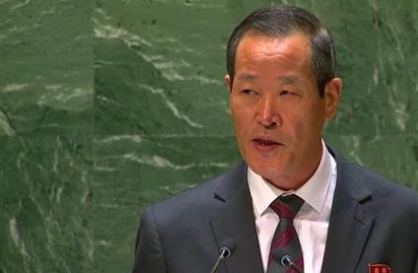The awarding of a Nobel Prize to three economists with divergent views on the working of markets highlights a troubling truth about the state of the discipline: We still don’t know nearly enough about why the prices of stocks, bonds and other assets move the way they do.
If the economics profession wants to help the world avert ― or at least better survive ― financial crises, it will have to be more open to new ways of looking at this question.
The recipients of this year’s Sveriges Riksbank Prize in Economic Sciences ― Eugene F. Fama and Lars Peter Hansen of the University of Chicago and Robert J. Shiller of Yale University ― have all made important contributions to the understanding of financial markets. Fama demonstrated that markets are very good at processing new information quickly.
Shiller showed that despite this, prices can get out of whack and stay there for long periods of time. Hansen provided tools to help figure out whether markets’ often odd behavior can happen in a world where investors are rational, or must be explained by human bias or some other malfunction.
Unfortunately, decades after the three economists had their groundbreaking insights, the crucial question remains unanswered: Can policy makers know with any certainty when markets are dangerously out of line, and is there anything they can do about it?
Central bankers still debate whether it’s possible to recognize asset bubbles when they occur, and whether they can or should be deflated. Regulators and bankers are still at odds over new financial products such as credit derivatives: Do they simply improve the market’s ability to process and reflect information, or do they also present new dangers of their own?
This is a failure that left the world unprepared for the most recent financial crisis, and the economics profession has been far too complacent about it. Economists can’t be expected to predict the future. But they should be able to identify threatening trends, and to better understand the conditions that can turn a change in prices into a financial tsunami.
On the margins, economists are doing promising work, together with researchers from other disciplines such as physics. Some, taking their cue from the computer modeling that helps forecast events such as hurricanes, are trying to build more realistic models of markets and the economy that take into account the interactions of countless individuals. Others are looking at how investors with differing views, using leverage, can turn otherwise benign financial instruments into tools of disaster.
What’s amazing is that the largest and most prestigious universities aren’t placing more emphasis on such paradigm-shifting work. For young researchers trying to get published and land good jobs in academia, challenging the conventional wisdom ― and questioning the workings of a financial industry that provides lucrative backing to business schools ― can be perilous. The commanding heights are often occupied by tenured professors heavily invested in the status quo.
This year’s Nobel shows the economics discipline in all its frustrating, admirable splendor. With apologies to Harry Truman’s jaundiced view of economists, it’s only a matter of time before the joke starts making the rounds: Did you hear about the two economists who couldn’t agree on how markets work? Yeah, they won a Nobel for it.
Yet if better understanding of that question is possible, it will come only through trial and error, the positing and refuting of theories. This is exactly the kind of creative thinking and intellectual risk-taking that Fama, Hansen and Shiller engaged in. It’s also what the economics profession needs more of as it continues to try to understand financial markets and how they can go awry.
Editorial (Bloomberg)
If the economics profession wants to help the world avert ― or at least better survive ― financial crises, it will have to be more open to new ways of looking at this question.
The recipients of this year’s Sveriges Riksbank Prize in Economic Sciences ― Eugene F. Fama and Lars Peter Hansen of the University of Chicago and Robert J. Shiller of Yale University ― have all made important contributions to the understanding of financial markets. Fama demonstrated that markets are very good at processing new information quickly.
Shiller showed that despite this, prices can get out of whack and stay there for long periods of time. Hansen provided tools to help figure out whether markets’ often odd behavior can happen in a world where investors are rational, or must be explained by human bias or some other malfunction.
Unfortunately, decades after the three economists had their groundbreaking insights, the crucial question remains unanswered: Can policy makers know with any certainty when markets are dangerously out of line, and is there anything they can do about it?
Central bankers still debate whether it’s possible to recognize asset bubbles when they occur, and whether they can or should be deflated. Regulators and bankers are still at odds over new financial products such as credit derivatives: Do they simply improve the market’s ability to process and reflect information, or do they also present new dangers of their own?
This is a failure that left the world unprepared for the most recent financial crisis, and the economics profession has been far too complacent about it. Economists can’t be expected to predict the future. But they should be able to identify threatening trends, and to better understand the conditions that can turn a change in prices into a financial tsunami.
On the margins, economists are doing promising work, together with researchers from other disciplines such as physics. Some, taking their cue from the computer modeling that helps forecast events such as hurricanes, are trying to build more realistic models of markets and the economy that take into account the interactions of countless individuals. Others are looking at how investors with differing views, using leverage, can turn otherwise benign financial instruments into tools of disaster.
What’s amazing is that the largest and most prestigious universities aren’t placing more emphasis on such paradigm-shifting work. For young researchers trying to get published and land good jobs in academia, challenging the conventional wisdom ― and questioning the workings of a financial industry that provides lucrative backing to business schools ― can be perilous. The commanding heights are often occupied by tenured professors heavily invested in the status quo.
This year’s Nobel shows the economics discipline in all its frustrating, admirable splendor. With apologies to Harry Truman’s jaundiced view of economists, it’s only a matter of time before the joke starts making the rounds: Did you hear about the two economists who couldn’t agree on how markets work? Yeah, they won a Nobel for it.
Yet if better understanding of that question is possible, it will come only through trial and error, the positing and refuting of theories. This is exactly the kind of creative thinking and intellectual risk-taking that Fama, Hansen and Shiller engaged in. It’s also what the economics profession needs more of as it continues to try to understand financial markets and how they can go awry.
Editorial (Bloomberg)





![[AtoZ Korean Mind] Does your job define who you are? Should it?](http://res.heraldm.com/phpwas/restmb_idxmake.php?idx=644&simg=/content/image/2024/05/06/20240506050099_0.jpg&u=)












